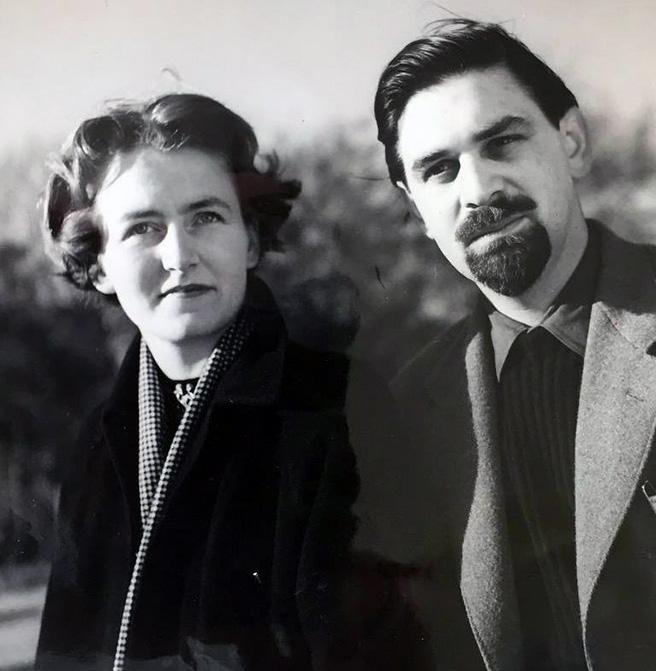
3 minute read
Sylvia Reid
SYLVIA Reid, who celebrated her 96th birthday in August had a long and successful career as an architect and a consultant designer. So successful in fact that items she and her partner John designed in the 1950s and 1960s are highly sought after by fans of modernist design, often seen for sale online and in showrooms today. One of their graphic designs, from 1967, can be seen on the back of just about every electrician’s van in the UK today. Intrigued? Read on.
John and Sylvia Reid met at the Regent Street Polytechnic in London at the beginning of the Second World War. There they formed a relationship which was to sustain them throughout a fruitful and prolific design partnership and become the foundation of their happy, lifelong marriage until John died in 1992.
Advertisement
One of the defining features of their design partnership was that it covered their entire output. In contrast to other famous designers of the period such as Robin and Lucienne Day or Charles and Ray Eames, they did not have independent projects but collaborated on everything they did.

Sylvia and John Reid
They established their practice, John & Sylvia Reid, in 1948, working from a rented flat in London. In her transition from student to architect and designer, Sylvia worked for Maxwell Fry and Jane Drew. The couple soon became involved in work on the 1951 Festival of Britain working alongside many notable figures of the time.

Images above and below: Reid designed Rotaflex lighting from the 1960s that are still highly desirable objects today.


John and Sylvia Reid
Today Sylvia and John Reid are perhaps best known for their furniture designs for British furniture manufacturer Stag and lighting fittings for Rotaflex. But their work was much more wide-ranging than this, winning three Milan Triennale medals and four Design Council awards. Their cast-iron anniversary ware for Izons is in the permanent collection of the V&A, and their work was frequently featured in the press and often on the cover of Design magazine. They also undertook a lot of graphic design, of which perhaps the pinnacle is the logo for the National Inspection Council for Electrical Installation Contracting, better known as NICEIC.

This logo is seen by many of us, every day on an electrician’s van somewhere! It is remarkable for a corporate logo designed in 1967 to have remained unchanged ever since.
The Reid’s design philosophy was a response to a world of austerity - they were working in a country recovering from the devastation of war and excited at the prospect of building a bright new future.
John Reid said that ‘Good design is the product of logical thought and the attempt to provide for the requirements of the world in which we live. Whether it be of furniture, interiors or complete buildings, it is concerned with the intelligent usage of suitable materials, arranged so that the functional requirements of the particular problem are solved’.
Like many of their post-war peers, the couple believed good design should be accessible to all. During the 50s and 60s, their futuristic lighting and stylish furniture brought a gleam of modernity to ordinary people’s houses across the UK.

Zannah, Sylvia and Dominic Reid

Sylvia Reid
John and Sylvia’s love affair with Cornwall started in 1961 when they bought a cottage in Marazion, where they spent every subsequent holiday. John died in 1992 and Sylvia moved to Cornwall permanently in 2003 to be close to her daughter Zannah, owner of Time Too Café, Probus.
Zannah’s older brother Dominic and the son of the original furniture manufacturer Stag, recently formed a new enterprise to remake some of the most classic pieces originally designed by the Reids in 1960s.

Images: Above John and Sylvia Reid designed Stag dining room chairs and (left) sideboard

Links and further reading:
http://collections.vam.ac.uk/item/ O1194595/casserole-dish-casserole-dishjohn-and-sylvia/
https://www.johnandsylviareid.com







